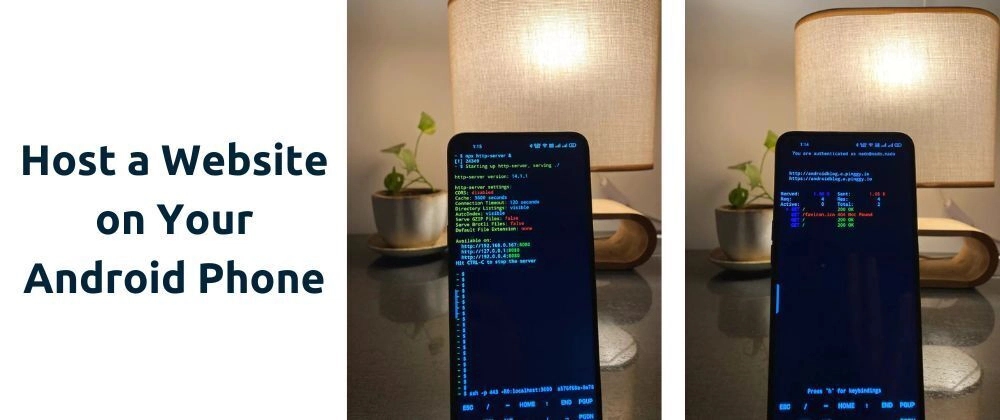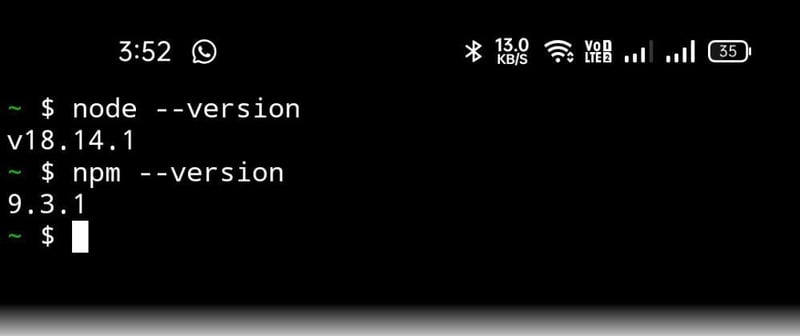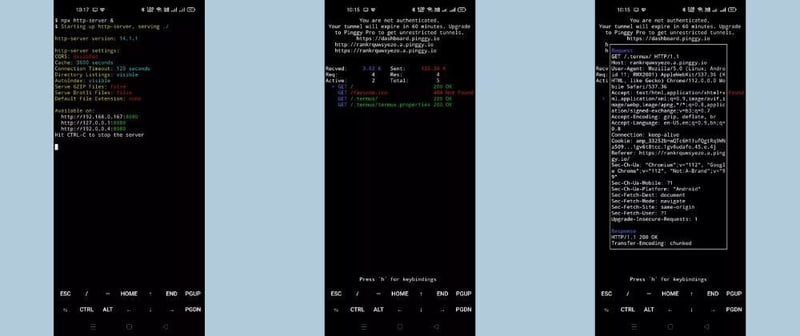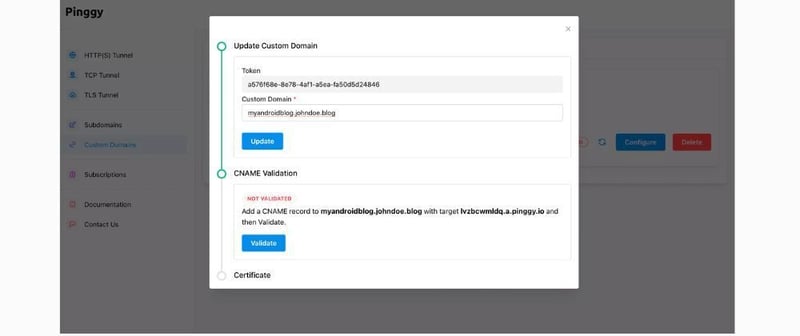Have you ever imagined hosting a website or blog straight from your Android phone? It might sound like a tech experiment, but with the right tools, it is completely possible! This guide will show you how to turn your Android device into a fully functional web server using Termux (a powerful terminal emulator) and Pinggy (a tunneling service that provides a public URL for your server).
What You’ll Need
- An Android device
- Termux (a Linux terminal emulator for Android)
- A stable internet connection
Step 1: Install Termux
Termux is an Android app that provides a Linux terminal environment without requiring root access. It enables you to install packages, run servers, and perform various tasks.
Step 2: Install Necessary Packages
Before we start hosting a website, we need to install a web server and SSH client on Termux. Run the following commands to update the package list and install the required tools:
pkg update && pkg upgrade
pkg install openssh
pkg install nodejs-lts
After installation, verify the versions using:
node --version
npm --version
Step 3: Start the Web Server
Let’s create a simple HTML webpage:
echo "<h1>Hello World!</h1>" > index.html
You can edit this page using:
nano index.html
Now, start a lightweight HTTP server using Node.js:
npx http-server &
This command will start the server in the background, running on port 8080 by default. To stop it, bring it to the foreground using fg and press Ctrl + C.
Step 4: Expose Your Server Publicly with Pinggy
By default, your server is accessible only on your local network. To make it available online, use Pinggy:
ssh -p 443 -R0:localhost:8080 a.pinggy.io
This command generates a public URL, like:
https://your-server.a.pinggy.link
Now, you can access your website from anywhere!
Tip: If you get a different port than
8080in the output, update the command accordingly.
Step 5: Monitor and Share Your Website
With Pinggy running, you can see live visitor statistics directly in the terminal. This feature is useful for monitoring traffic and analyzing incoming requests.
Bonus: Use Your Own Domain
If you want a custom domain like www.mywebsite.com, you can configure it with Pinggy’s Pro Plan:
- Sign up for Pinggy Pro and access the Custom Domains section.
- Add your domain and configure the provided CNAME record in your domain’s DNS settings.
- Validate and issue an SSL certificate from the Pinggy dashboard.
- Use the following command with your Pinggy token:
ssh -p 443 -R0:localhost:8080 <your_pinggy_token>@a.pinggy.io
Now your website is accessible via your own domain!
Conclusion
Hosting a website from an Android device is easier than you might think. With Termux, a Node.js HTTP server, and Pinggy, you can turn your phone into a web server and share your content globally. Whether you're testing a web project, hosting a personal blog, or experimenting with mobile servers, this setup provides an innovative and flexible way to go live.






Top comments (0)